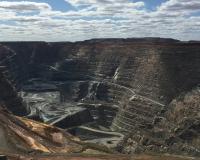
Vibrant Environment
Climate Change And Sustainability
All | Biodiversity | Climate Change and Sustainability | Environmental Justice | Governance and Rule of Law | Land Use and Natural Resources | Oceans and Coasts | Pollution Control

When I was a child, my father would repeatedly remind me (and my siblings) to “turn off the lights—money doesn’t grow on trees”. Was it because he was concerned about the environment? No, not really—it was because we were relatively poor. But I am pretty good now about remembering to turn off the lights (and I get pretty annoyed when others don’t—especially when the lights are “supposed” to go off automatically but don’t).
Now, as the current chair of the ABA Section of Environment, Energy and Resources (SEER), I have the ability and privilege to oversee many exciting initiatives.

States are continuing to make significant commitments to reduce greenhouse gas (GHG) emissions. Though the federal government is looking to roll back federal GHG reduction programs, states have a long history of taking the lead to design policies that meet their citizens’ environmental, health, and economic objectives and often look to build upon other states’ successes.

The current flooding disasters in the Midwest, as well as the flooding consequences of Hurricanes Michael, Harvey, Irma, and Maria, have damaged thousands of U.S. homes and businesses over the last decade. The National Flood Insurance Program (NFIP), enacted by Congress in 1968, aims to minimize the risk of flood damage as well as reduce flood-related disaster recovery costs. This federally backed program provides insurance to property owners and renters, establishes building and land use requirements and floodplain management practices for local communities to qualify, and maps flood-risk areas to inform development decisions and insurance premiums. But the NFIP assumes that flood risks are static and change little over time, and the effects of climate change are challenging this assumption.

Many nationally recognized environmental groups have adopted principles of equity and diversity into their missions over the past two decades, but the environmental justice movement and the marginalized groups that have historically driven the movement are often left out of the “mainstream” environmental discussion. Groups that lack political power such as people of color, people with disabilities, people of low income, the LGBTQ community, and women are often ignored by those with more social influence. Progress has certainly been made in recent years, but more opportunities exist to connect national-scale nonprofits to the groups who face the disproportionate effects of environmental degradation. This issue is highly important because the effects of environmental detriment disproportionally impact these minority groups, and is still a reality that many of these communities face every day. As such, it is essential to recognize that marginalized communities have had a significant impact on environmental policy, and it is imperative to continue to fight for more equitable conditions.

As the global community faces the reality that a rapid reduction in greenhouse gas (GHG) emissions is urgently required, a new class of climate change litigation is emerging. But what impact are these proceedings having?
A recent case from New South Wales (NSW), Australia, has directly challenged development that is at odds with GHG emission reduction targets. Hailed as a “landmark decision” in climate litigation, the case represents the first time an Australian court has refused a coal mining development consent not only on the basis of unacceptable “planning, visual and social impacts,” but also to prevent a new source of GHG emissions.

What comes to your mind when you hear the word “biotechnology?” Do you tend to think of genetically modified corn or lab-grown meat? Have you ever thought of bricks grown from bacteria or leather bags made from mushroom roots as biotechnology?
Genetically engineered food is one popular form of biotechnology, but the possible products of biotechnology are expanding rapidly beyond food and agriculture, transforming a variety of other industries, such as construction and clothing.
Here are four new and emerging applications of biotechnology that you might have never considered.

Last month, the Trump Administration formally ended talks with California over the federal government’s plans to freeze vehicle emissions standards and likely revoke the state’s long-standing authority to set its own standards under the Clean Air Act (CAA). The success of California in mitigating air pollution and reducing greenhouse gas (GHG) emissions under CAA §209—and that of the 15 states that have invoked waivers under §177—is now in question. And the Administration’s plan to end negotiations and move forward with its proposed Safer Affordable Fuel-Efficient Vehicles rule will most certainly lead to a heated, lengthy court battle.

Interested in learning from leading scholars, policymakers, and practitioners about innovative policy proposals related to federal energy leasing, state preemption of local environmental initiatives, or free trade and enforcement of environmental laws? If so, you’ll want to attend the 12th annual Environmental Law and Policy Annual Review (ELPAR) conference on March 29, 2019, in Washington, D.C. The conference is free, and for those of you outside the D.C. area, it will also be available via webinar.

On January 29, 2019, PG&E, the largest utility company in California, filed for Chapter 11 bankruptcy. The announcement comes after a spate of wildfires in California have been linked to the company’s equipment and hardware—including a PG&E-operated transmission tower that investigators suggest may have sparked the deadly Camp Fire in Northern California. While the corporation struggles to maintain its public integrity amidst financial reorganization and internal reshuffling, energy consumers and producers alike have been left with an uncertain future.

“We’re a long way off, to tell you the honest truth.” A candid statement from New Zealand Climate Change Minister James Shaw, made days out from the 2018 United Nations Climate Change Conference—COP24 Katowice—on the possibility of New Zealand meeting its emission reduction commitment under the Paris Agreement.